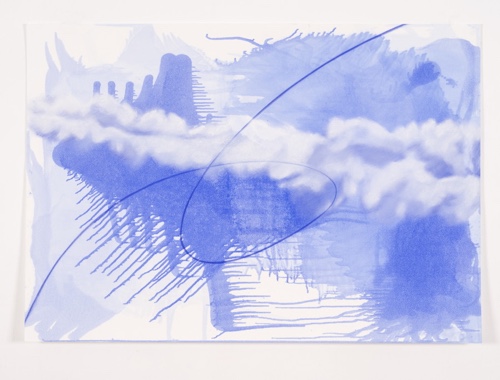Orbit: The Kepler Suite
Stephen McLaughlan Gallery, Melbourne 2016

When we think of the word ‘orbit’ it’s likely to bring to mind a state of motion associated with the tracking of objects across the sky; galaxies, planets, comets and asteroids, satellites, space ships and space junk, all swirling around in space and occasionally crashing in to our planet or each other. When we think of ‘orbit’ we could also be thinking about the meteorite that crashed to Earth dramatically in Russia in 2013, or Apollo 11’s moon landing in 1969 and that classic Australian film The Dish, perhaps some of the recent larger than life space science fiction films, maybe robots exploring and imaging the planet Mars, or if the night sky is not blurred by artificial light near you, the light trace of the International Space Station crossing the sky on a clear starry night.
This might also set us to thinking about geometry and physics, spheres and ellipses, atoms and particles, (the stuff we’re made of), the push and pull of gravitational waves and distortions, and even the shape of our eyes. Increasingly we see world wide publicity about astronomy and game changing discoveries such as the recent detection of gravitational waves at LIGO/Caltech in the U.S. and the Higgs Boson particle at CERN in Switzerland, (look it up but don’t expect to fully understand it). We might be reminded to revisit the history books to find the precursors of such thinking, some of whom faced severe religious opposition to their ideas at the time, Copernicus and Galileo, Brahe and Kepler, Newton, Herschel and Einstein.
Kepler used the Danish astronomer Tycho Brahe’s calculations of the orbit of Mars, to establish that the planets circulate around the sun and in ellipses. In the 17th century he wrote the book Somnium (The Dream), as an allegory to confirm the contentious Copernican view at the time that the earth is part of a heliocentric universe. His major purpose was to demonstrate to his fellow man that the human animal was not the central figure in the cosmos, ‘that the heavens did not wait upon his home planet, earth.’ Somnium is a theoretical guide for an early 17th century lunar expedition across the physical obstructions that modern astronomers recognize as lying between the earth and the moon. It is regarded by many as the precursor to the science fiction genre but it is also considered an incredibly prescient exercise.
Kepler’s research still influences astronomy and space exploration today, and Somnium, in a contemporary sense, is a timely reminder that for all our human ingenuity and hubris, we are only a small part of something very much larger than ourselves. As I write, on 12 May 2016, NASA’s Kepler Space Telescope has tracked down the largest collection of exoplanets ever found outside our solar system confirming that most, if not all, stars in our galaxy harbour planets. And many of them are in the ‘habitable’ or ‘goldilocks zone’ where they possibly contain water and harbour life. The naked eye is unable to see all the things which science is discovering about our universe. We’ve extended our vision through the electromagnetic spectrum with artificial eyes, increasingly complex machines and technologies, while we look for faint whispers from afar and speculate. What’s out there? How does it work ? Are we alone?
In this series of images I work with models which emphasize the value and complexity of the physical world in terms of sky situated knowledge to create a sense of, or feeling for, space, time, geometry and matter and the hidden traces and forces which are embedded in the idea of orbit.